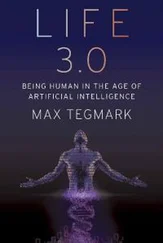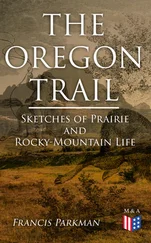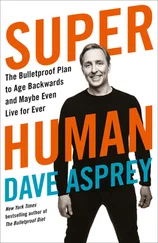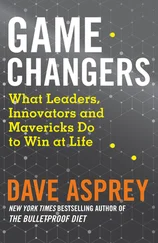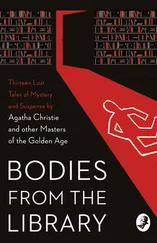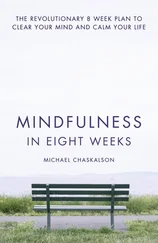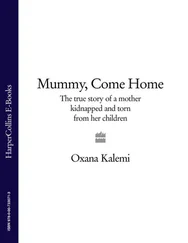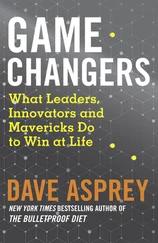Your body does need some omega-6s, but there are so many of them in a standard Western diet that you would have to work really hard to consume too few. Ideally, you should consume no more than four times as many omega-6s as omega-3s, but most people today eat an average of twenty to fifty times more omega-6s than omega-3s. This is a hugely underreported source of accelerated aging. Changing the balance of omega-3s to omega-6s you consume can give you a Super Human metabolism because your stored fat cells change dramatically when you eat omega-6 fats. No matter how much (or how little) body fat you have, anywhere from 7 percent to 55 percent of it is made of inflammatory omega-6 fat, depending solely on how much of each type of fat you eat.
If you are lean, you want to eat the same composition of fats that you want stored in your body. That means that whether you’re on the high-fat Bulletproof Diet or a low-fat diet, stick to about 50 percent saturated, 25 percent monounsaturated, 15 to 20 percent undamaged (meaning not oxidized) omega-6, and 5 to 10 percent omega-3 fats, including EPA and DHA. If you are obese and have a good amount of excess body fat (like I used to have!), right now your body is probably storing too many unstable fats. To shift your fat composition, temporarily eat an even higher percentage of the type of fats you want in your body. Of the fat you eat, 50 to 70 percent should be saturated, 25 to 30 percent monounsaturated, and only 10 percent undamaged omega-3 and omega-6.
The challenging thing is that the most common blood tests doctors use to measure things like cholesterol and triglyceride levels do not offer an accurate picture of the type of fats in your brain, heart, or muscle cells, which is different than fat in your blood cells. So there is good reason to distrust the fat ratios found in the blood tests that most doctors rely on. Looking at inflammation markers in your blood work, such as C-reactive protein (CRP) and homocysteine, will give you a much more accurate sense of how you’re aging.
When I started experimenting with eating more fat, I was nervous—it went against everything I’d been told about healthy eating. One of the biggest leaps I took was to begin eating more grass-fed butter. When I took a deep breath and stopped holding back on butter, magical things started to happen. My focus increased, I had more energy, and my blood panels showed that my levels of inflammation had decreased.
Like any good biohacker, I kept experimenting until I knew I had taken things too far. I heard that some Inuit populations survived on no carbohydrates at all, so I decided to subsist on a diet of almost entirely fat and animal protein and see what it would do for my health and performance. The result of that experiment was a host of new food allergies because the bacteria in my gut were literally starving and out of desperation began eating my own gut lining. Sadly, a diet of only steak and butter won’t work for the long term. But it was delicious in the short term.
PIG’S EARS AND ENERGY FATS
By implementing everything I’d learned about nutrition, I was able to dramatically decelerate my aging. My knees were still a mess, but I weighed less and had more energy than ever before, and I managed to (barely) graduate from business school while working full time despite my cognitive dysfunction. I decided to celebrate with a trip to Tibet to learn meditation from the masters there, something I never would have been able to do when I was old, obese, and inflamed because it involved a lot of hiking and steep terrain.
I had just descended 7,500 vertical feet in one day in Nepal when I knew there was something terribly wrong with the cartilage in my knees. The cartilage itself was bruised from all that hiking, and I could barely walk across the street even using two trekking poles. I had exactly one week to recover before setting out on a rugged 26-mile walk at 18,000-feet elevation around Mount Kailash, which is considered to be the holiest mountain in the world. I knew that eating some extra collagen would be beneficial for my joints, but at the time collagen supplements didn’t exist and there was no bone broth to be found in Tibet. I had to get creative.
The next day, the bus I was in stopped about halfway between Kathmandu and Lhasa in a town with only one restaurant. It had mud walls and a dirt floor and was filled with locals. I asked a Chinese friend from the bus to read the menu for me and quickly ascertained that the best source of collagen in the place was … pig’s ears. Without hesitation, I ordered it, and a few minutes later I came face-to-face with a giant bowl of cold boiled pig’s ears. I looked around to see if Joe Rogan, the host of Fear Factor , was hiding to challenge me to eat them for an absurd cash prize, but he was nowhere to be seen.
I had the idea that the pig’s ears would somehow be more palatable if I could find a way to warm them up, so I ordered some watery soup and dipped the ears in one at a time before biting into their rubbery blandness. It was the second worst meal of my life. (The winner, during that same trip, was Chinese military ration sardines heated over a yak dung fire.) The pig’s ears didn’t have much taste, but the texture was wholly unappealing. However, I was shocked when I woke up the next morning and could walk without using trekking poles. Two days later, I could jog up a short hill. That is the magic of collagen. But I didn’t want to have to eat pig’s ears every time my knees hurt, so I worked hard to bring collagen to the market years later. I just couldn’t see blending pig’s ears into yak butter tea!
While I was in Tibet I met many old yet vital, energetic people and learned about their practices for pursuing a long, rich life. As I sat with meditation masters and Buddhist monks, I saw that a mind that can control its response to stress is the world’s most advanced anti-aging technology. If you’re walking around in a perfect environment eating all the right foods but your fight-or-flight response is always switched on like mine used to be, there is no doubt you’ll age more quickly.
I made it to Mount Kailash thanks in part to the collagen in those pig’s ears, but between the elevation and below-zero temperatures, I was hurting. Chilled, hypoxic, and exhausted, I staggered into a small guesthouse, where a kind Tibetan woman handed me a creamy cup of traditional yak butter tea. It was delicious, but more important, I felt like it brought me back to life. I even wrote about it in my travel journal. The air was still thin, but I was suddenly and remarkably full of energy, and I had to understand why. You’re not supposed to want to dance when you’re at 18,000 feet.
When I returned home I brewed some tea, tossed it in the blender with some butter, and was left with a greasy cup of tea that most certainly did not impart any mental clarity, unless you count the adrenaline from mild revulsion. Clearly, something different was happening back in Tibet. Figuring my problem was the tea, I spent a ridiculous $200 on a variety of high-end teas from a local Chinese merchant, but none of them had the magical effect I remembered. So I went to my local Whole Foods and another gourmet store, where I bought every single brand of butter from around the world to see if that was the variable that mattered. I tested twenty-four butters, and learned the trick was to use unsalted butter from grass-fed cows. You simply don’t get the same results using butter from cows that eat corn and soy, because those oils end up in the butter, giving you more omega-6 fats. The yaks that provided the milk for the butter I had in Tibet certainly didn’t eat any corn, because it doesn’t grow there!
From my anti-aging work, I knew about the healthy fat in coconut oil, so I began experimenting with adding coconut milk and oil along with the butter, but the coconut flavor was too strong, and it didn’t add any more energy than butter alone. So I switched from tea to coffee, my first love. The coffee stood up to the coconut oil better than tea, but the real magic happened when I switched from coconut oil to concentrated oil that is extracted from coconut oil called medium-chain triglyceride (MCT) oil. More than 50 percent of the fat in coconut oil comes from the different subtypes of medium-chain triglycerides. There are four types of MCT oils. All are flavorless, but the rare types convert effectively into ketones, your mitochondria’s preferred fuel source. This was the genesis of Bulletproof Coffee.
Читать дальше


